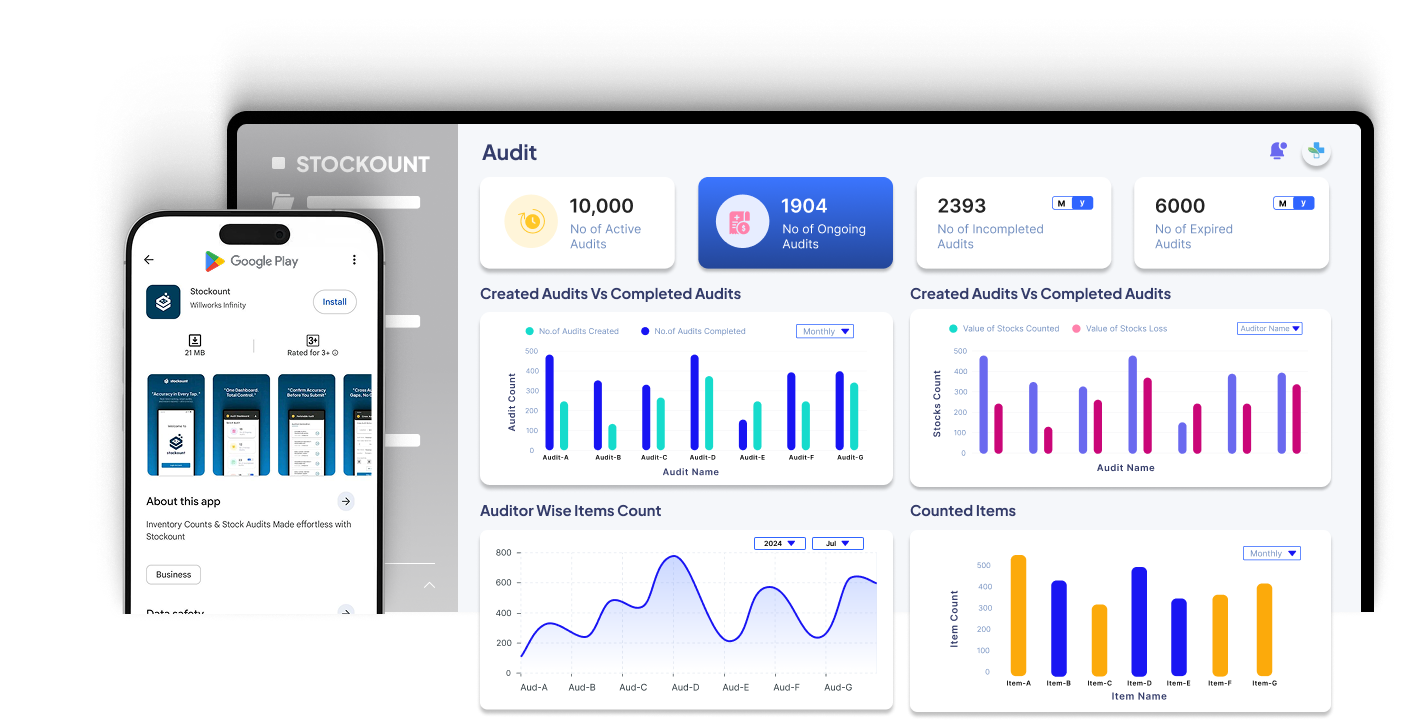Why Stock Audits Matter ?
Stock discrepancies silently drain profits. Whether you run a hypermarket, retail chain, franchise, or warehouse, even a 1% mismatch affects your bottom line. With Stockount’s inventory audit system, you can quickly detect errors, maintain stock accuracy and make smarter decisions. Our inventory counting software streamlines audits, reduces losses and optimizes your inventory management.
Choose Your Audit Types
Ideal For: Large Inventories
Breaks audits into manageable phases without disrupting operations.
Reduces Operational Disruption By 60% Compared To Full Audits.
Ideal For: Year-End & Regulatory Compliance
Complete inventory control and accuracy verification in a single session.
Meets All Regulatory Requirements With Comprehensive Documentation.
Ideal For: Spot-Checking Valuable Items
Audit specific sections instantly by uploading a stock sheet.
Complete Section-Wise Audits In Under 30 Minutes.



















